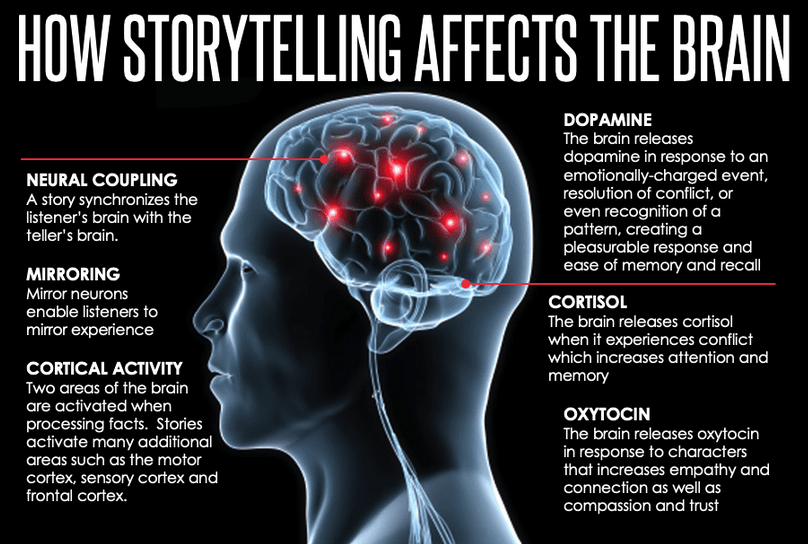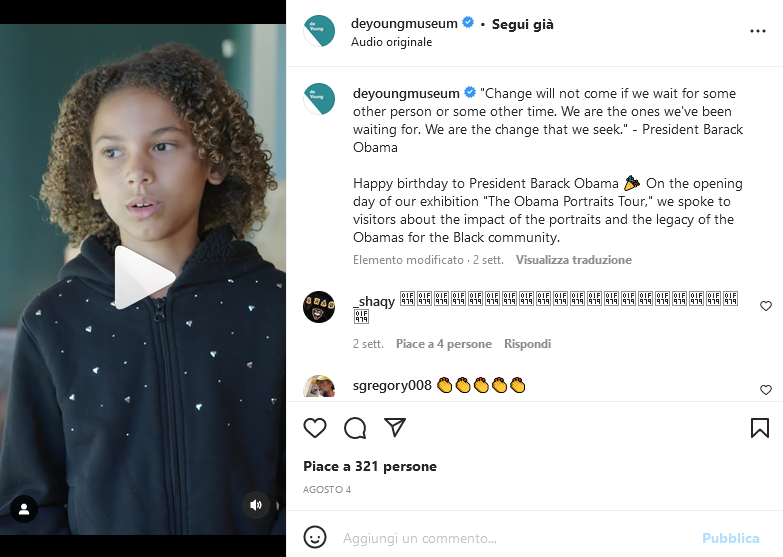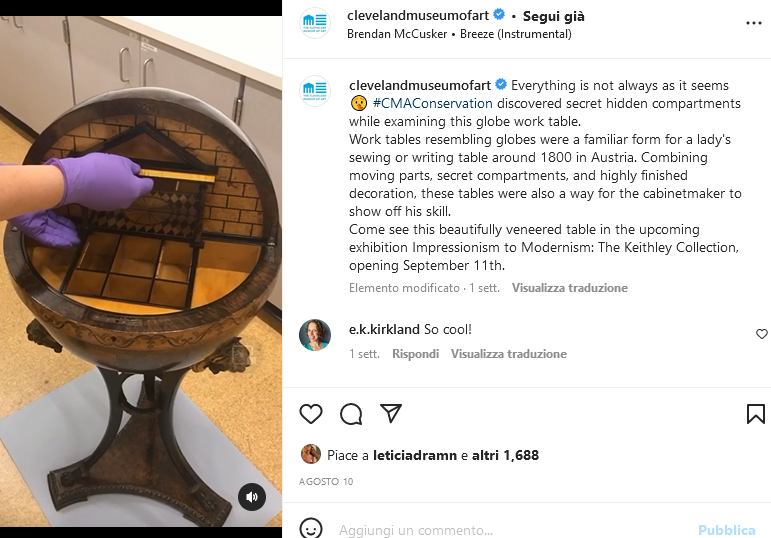Museum Storytelling: How to Write a Story That Converts
It’s a struggle, I know.
Finding effective ways to engage and convert your audience into repeat visitors/customers isn’t easy - especially after a 2+ year pandemic.
In 2020, about 12.5% of worldwide museums lost more than 90% of annual revenue, with a decrease in attendance higher than 75%.
And a whopping 60% of museums in the US are still experiencing pandemic-related financial losses.
Raise your hand if you’ve been there, too. 🙋
Some questions may have nagged you: How can I make my museum more engaging? What should I do to better interact with my ideal visitors and generate income?
A simple but often overlooked answer is… museum storytelling.
Think about it.
Museums are great storytellers! Their buildings, collections, and even people have stories worth telling - they’re part of their identity and day-to-day communications.
So, why not make the most of them to leverage your digital presence, encourage visits, raise funds, and trigger sales?
Stories are essential in content marketing because of the emotional connection they build with people. They drive attention and win their loyalty.
But how do you approach the art of storytelling?
In the following, you’ll learn seven key steps to creating valuable stories that attract and grow your audience.
Ready?
Let’s do this.
Why Use Museum Storytelling in Your Content Strategy?
Words have power. So has museum storytelling.
Whether it’s social media content, website copy, emails, or blog posts, we’re naturally inclined to connect with a compelling story, empathize with characters, and react to a narrative.
Good stories include:
The main character (your brand or target persona).
Conflict or problem (challenges you’ve overcome or your audience’s pain points).
Solution (related to your offerings/services/initiatives).
By tying these three elements together with an enticing narrative, you make your marketing message effective and impactful to your audience.
Why?
Because storytelling for museums is about turning bland, forgettable content into captivating, inspiring, and educational messaging that’s catered to your audience’s needs and desires.
Stories have the great potential to:
Capture attention.
Be easy to retain.
Make information more accessible.
Showcase the human side of your brand.
Trigger an emotional response.
Boost trust and empathy.
Encourage people to take action.
But there’s more!
Recent studies claim stories cause oxytocin release in the human brain, which affects consumers’ attitudes, behaviors, and decisions (scientists estimate that 95% of purchasing decisions are subconscious!).
Screenshot from: Pamela Rutledge
Effective storytelling acts as a motivator that influences emotions and human connections.
Hence, integrating it into your content strategy is a surefire way to skyrocket your engagement rates. You’ll be able to get people to jump on your email list, join your initiatives, buy your products, subscribe to your membership, and ultimately visit your museum.
7 Steps to Building Lasting Relationships With Museum Storytelling
So, how do museums tell effective stories online?
The seven actionable tips listed below show you the best ways to create attractive museum storytelling that…
Converts leads.
Drives trust.
Builds relations.
Boosts your brand presence.
Mastering this powerful skill will help your institution stand out from the crowd, have a strong bond with the target audience, and live "happily ever after." 😉
Let’s get started!
Develop Your Brand Character
When you think about your museum, do you see it as a person?
Building a brand character is at the core of museum storytelling. It’s about defining your identity, personality, goals, and services in a way that resonates with your audience.
Focus on the traits that make you unique, choose a tone of voice and language accessible to your ideal visitors/customers, and make your offers more approachable to let people know “the person” behind your museum name. (This mindset is crucial to develop a content marketing strategy that converts.)
Also, follow the hero's journey method to ideate gripping stories that earn more engagement.
Your brand - or audience - is the hero facing a challenge/problem (aka the villain). The hero decides to overcome the conflict by using what you offer (services/products). The latter represents the magic solution that will help the hero succeed and achieve the desired goals.
Key points to bear in mind:
Define the core values of your museum.
Decide what value to outline and communicate to your audience.
Develop a story around that specific value.
Fix the problem and offer the outcome.
Understand how the solution makes your readers feel.
Identify the actions that will help you convey your message effectively.
When using this format, you create a content piece that is relevant and relatable to your audience’s needs - they identify themselves with the hero, get involved in the story, and eventually connect with you.
2. Get to Know Your Audience
You can’t develop high-converting museum storytelling if you don’t know your audience first.
Ask yourself:
Who are you writing for?
What do your readers want to know/learn?
What are their pain points/expectations?
Writing for them and meeting their interests is key - so, dig deep into your audience research, talk with them, and take note of their wants!
The more familiar you get, the more authentic and compelling stories you’ll tell.
Plus, you’ll be able to trigger the right emotions, making your brand real, human, and memorable to your readers - they'll feel motivated to follow you, engage more, and take action towards your objectives (subscribing to the newsletter, increasing on-site visits, etc.).
3. Define Your Goals
To nail the perfect museum storytelling, you need to set clear content marketing goals that reflect what you want to be known for.
Remember, you’re writing content for a reason. Whether you intend to communicate your museum’s mission, educate your community, or involve people in a special event, it’s essential to pinpoint your objectives before putting pen to paper.
This way, you’ll know:
What story to write.
How to make the story work towards your goals.
The actions you expect your audience to take at the end of the story.
Protip: when defining the “why” of your content creation, also think about where your leads are in their customer’s journey (Do they know your brand already? Have they visited your museum before?) and what will change for them after reading your stories.
4. Come Up With a Solid Structure
Good museum storytelling is based on a well-structured outline.
Mapping out your story makes content creation easier, helping you visualize the main parts of your narrative, including the core message to communicate to the readers and the outcome that brings leads to the next step.
Here’s what to include:
Type of story (story of self, knowledge-oriented, value-driven, etc.).
Powerful hook (an introduction focused on the audience’s pains draws attention and generates empathy).
Data and facts (backing up your research with data adds more credibility to your story and makes your content authoritative and trustworthy).
Visuals (they get readers hooked, having higher retention than text).
Solution (effective solutions to problems help you gain trust).
Clear CTA (at the end of the story, it guides your audience towards a specific action).
Build a structure beforehand to make sure you get the most out of your marketing efforts.
5. Keep It Real and Personal
Authenticity is key to successful museum storytelling - especially since people look for uplifting, truthful stories that resonate with them.
Therefore…
Make your stories fresh, unique, and entertaining.
Present your brand values and principles in your own voice and from a different perspective.
Hone in on people’s curiosity and interests when promoting your collections or an upcoming exhibit.
Be more than an information-sharer.
If you practice personal and conversational storytelling, your audience will be more willing to like and share your content - you’ll stick in their mind for the relatable experiences and emotions you convey!
By doing so, not only will you…
Create more effective stories.
Keep people engaged.
Build stronger relations.
…but you’ll also achieve the brand loyalty you’re aiming for.
6. Keep It Simple and to the Point
Every good story should be based on the KISS formula (Keep It Simple, Stupid - or as I like to say, “Keep It Sweet and Simple”).
Simplicity and effectiveness are the lynchpins of results-driven museum storytelling.
Hence, it’s crucial to create stories that are easy to understand, accessible to diverse audiences, and in a style that is familiar to how your audience communicates online.
Avoid:
Wordy sentences.
Technical jargons.
Academic tones.
Redundancies.
Instead, organize your story in a way that keeps the readers’ attention high - the more concise your message is (with short sentences, action words, etc.), the easier it is to digest and remember it.
After all, your purpose is to trigger an emotional response that pushes your audience towards a specific action - whether it’s to follow you on social media, join the newsletter, or buy tickets to visit your next event.
The last thing you want is to leave readers bamboozled, bored, or unmoved. So, create a compelling narrative that highlights the transformation they need in their life and how using your services/products will help them achieve that.
7. Know When Your Museum Storytelling Gets Boring
Whenever you publish stories on your social media, website, or blog, keep track of their performance.
A consistent analysis of your marketing data and results will help you measure:
Engagement rate.
Conversion rate.
Content traction.
ROI-growth.
But most importantly, you’ll understand if your narrative keeps captivating your target audience over time.
The thing is… you need to optimize your content to give it the extra push to succeed.
Here’s what to do:
Monitor your readers’ behavior (Do they interact with you? Do they show a lack of interest or often bounce off your site?).
Assess your writing and tone (Are you too pushy or detached? Does your story resonate with your audience?).
Keep the momentum going (get your readers hooked with questions, quotes, reflections, etc.).
Tell stories that move people (tailor your content to their expectations and needs).
Taking the time to assess your museum storytelling will pay off immensely with more visibility, higher engagement, and more leads.
Emotional Museum Storytelling Will Win Your Audience Over
There you have it: seven key steps to creating results-driven museum storytelling. 💯
Incorporating stories into your content strategy lets you communicate information in a way that is persuasive, memorable, and close to people’s emotions.
With the help of effective storytelling, you deeply connect with existing and potential visitors, appealing to their human side and moving them to the desired action.
Without it, on the other hand, your content would be bland, dull, and void - meaning low engagement and zero conversions.
Follow the steps listed above to make online content more lively, impactful, and magnetic. This, in turn, will delight bigger audiences and benefit your brand longevity.
And if you’re still wondering: “Why should stories matter to museums?”, think about how they’ve been a central part of our communication - and entire existence - for ages.
We live through stories. Literally! 📖








